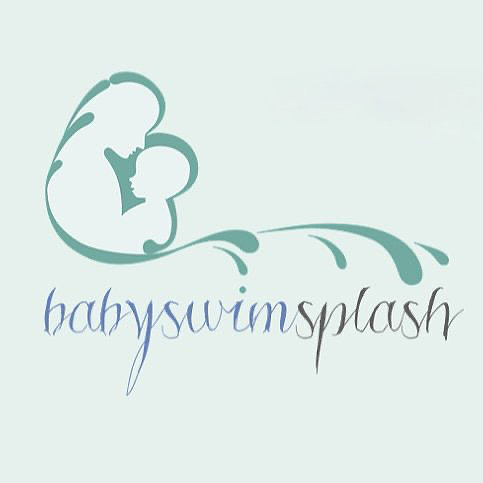Frequently Asked Questions - Baby Swim Splash
When can I start to take my baby swimming?
You can take your baby from birth as long as his/her cord is healed, mothers coming into the water must have finished post birth bleeding before they can come in. Usually around babies aged 6 weeks old or weight of 7lbs or more and then you can start. You no longer have to wait until they have had their immunisations. However, in our swimming sessions babies start from 8 weeks old.
I have a child with special needs. Can we come swimming?
This will be specific to your child but most babies with special needs are able to swim. If your child cannot move independently on land they have the freedom in the water to move as they wish. There is a choice for your child to join our group sessions or our ‘Sensitive Swim’ Sessions,
Do I need to be able to swim to bring my baby?
No. Many parents come to classes because they cannot swim or they are nervous in water and want their child to grow up with no fear and a healthy respect for water. The pool we use is chest height and so you will always be able to touch the bottom of the pool. You will never be asked to do something you are not comfortable with, and even when your baby is swimming happily underwater you will not be expected to join them unless you are happy to do so. Many parents have conquered their own fears of the water by taking their baby swimming, and watching you grow into a confident swimming family is a fantastic experience for all involved.
Can both parents swim with the baby?
Yes you are both welcome, and family members too. However we ask that you speak to your teacher prior to the lesson to see how many are in the session before you both come in.
What if my baby is ill?
Swimming is unlikely to worsen a mild condition such as a cold. It is not advisable to bring your baby swimming if they have a bad cold, COVID 19 or an infection of any kind, a temperature or a childhood illness such as chicken pox, measles or mumps.
People suffering from diarrhoea must not swim, EVER – or for 48 hours after the last bout. This is crucial and will never be compromised in our pool. The effects on the pool from a leak or contamination can be devastating and we wish to avoid this at all times. Those who have been diagnosed with cryptosporidiosis must not swim for 14 days after diarrhoea has stopped, as infective spores can still be released in that period.
If you are unsure about any medical condition in relation to swimming, please always speak to a health professional.
Does my baby need injections before swimming?
No, your baby does not need to be immunised before swimming. The Department of Health recommends that you can take your baby swimming from a very young age. There is no need to wait until they have been vaccinated. Refer to the NHS website.
How long is a class?
Baby Swim Splash sessions are 30 minutes. Our ‘Nurturing Babies in Water’ sessions are 25 minutes long.
How much do your classes cost and do I pay per class or for the term? What if I have a holiday and/or can't make a class?
Classes cost £14. Payment is required in advance of joining the classes. We do not operate on a ‘pay per class’ basis.
We don’t offer a reduction on the class fees due to holidays / not being able to attend classes. Unfortunately we are unable to offer replacement classes at this time.
Do you offer drop-in classes & do I have to swim in the same class each week?
We only book classes on a term by term basis, or if the term has started the remainder of classes within the term. A booking is made for a particular weekly class.
Can I join classes if the term has already started?
Subject to availability, you can join our classes part way through a term. You will be charged for the number of classes left in the term.
How much time before the start of the class should I arrive?
So that you can enjoy your classes and make your time with us stress free, please arrive 10 minutes before your class is due to begin to give yourself plenty of time to get changed and stay relaxed.
What does my child need to wear in the pool?
Children must wear a double layer system in our pool. The first layer is a swim nappy – Huggies Little Swimmers or equivalent. The second or top layer is called a Happy Nappy. The Happy Nappy is made by Splashabout and can be bought from them directly at www.splashabout.com.
If we have a leaky nappy, it means we have to cancel the class and the pool will be closed for a few days until it is safe to swim again.
Happy Nappies are designed to prevent leakage and must be properly fitted; the teacher will be on hand to make sure your baby’s nappy fits snuggly around baby’s legs and tummy.
You can purchase a neoprene ‘Happy Nappy’ for your child from us at a cost of £8.50.
Handy hint: The disposable swim nappy (first layer) dries out perfectly well and can be used several times!
What do I need to bring?
A hat or hood that covers your child’s ears for when they leave the building
2 x large towels for when they get out of the pool and the other to dry with. Handy hint: wrap a hot water bottle in the towel that you will be drying them with
Your swimming kit
A drink and/or snack for after the class for your baby (and probably you too!) – but please remember not to eat in the changing rooms
Can I feed my baby before a swimming class?
Babies 8 weeks to 12 months old can have a small milk feed both before and during the class. Children should not swim on a full stomach because they may swallow water and be sick in the pool! Please do not feed your child any solids an hour before swimming.
What activities do you do within a class?
Specific holds to ensure safety and to stimulate movement and fun in the water
Preparation or participation in submersion by dips, jumps or dives
Swimming with your baby
Specific instruction as a group and individual attention when needed
Free time to practice your skills and to play
Games, songs and rhymes
Does my baby need armbands?
Using armbands on your baby can create a false sense of security in the water — for you and for them. As one of our core beliefs, we teach you to teach your baby to swim, it’s important that you learn how the water can support them. So you will act as your child’s temporary support as they learn to swim freely from the beginning.
Do you submerge babies?
Children at Baby Swim Splash feel at home in the water because we always listen to your child, respect their wishes and respond to their needs. The philosophy behind submersion is clear: children, with proper nurturing and care, have a spontaneous and relaxed relationship with water and will explore the underwater world in their own time. Our swimming classes offer a perfect opportunity to develop this and allowing parent and baby time to bond.
How long before they swim?
Babies are around 18 months to 2 years old when they start to swim unaided. However, every child is different in their focus and intent and in their physical strength and development. Baby Swim Splash babies will develop a love and understanding of the water and from a young age will be able to move freely with minimal support. We teach without armbands mainly supporting the babies with our hands and body with the fun use also of floats and swim woggles. Babies learn to feel their own buoyancy and to propel themselves across the pool. Always remember there are learning curves and plateau, just relax and have fun.
Why must I shower before swimming?
The simple answer is to keep the pool water clean for your child and everyone else. So, for your child’s comfort please remove your make-up and shower properly before your class. If possible, do not apply cosmetics, fake tan or perfume on the day you are coming swimming.
Can a relative come to watch?
Yes, babies and toddlers usually love their family members coming to watch them.
Can I take photos and videos?
For safeguarding reasons, we ask that spectators do not take photos during lessons. However, with the permission of your instructor, you may be able to take a photo at the end as long as no-one else is in the picture. Videos are not permitted at any time.
Is there car parking available? Is there somewhere to leave my buggy?
There is free parking in the smaller disabled car park just outside the pool building at Oakham C of E and on the road parking at Edith Weston Academy, just outside the school gates. Please note, buggies / car seats ideally need to be left in the car as there is very little space inside both venues.
What if my child cries in the water?
There are many reasons your child may cry in the water. All babies have to adjust to the new environment around them with its new sounds and sensations. The splashing and feeling of the water will be new and exhilarating.
Tired babies will not get the most from their swim so try to give them a nap beforehand or do not hesitate to leave the pool if your baby has had enough.
Around 18 to 24 months of age, some babies can experience a crying phase specific to swimming. This is due to their specific stage of development, they are starting to understand risk, cause and effect. This can cause some emotional turmoil for parents during this time, as the instinctive reaction is to stop coming to classes, however this time does pass. We advise parents to remain positive and relaxed and hopefully we can work together with you to make sure your baby only cries when its time to get out! If at this stage you would prefer your child to join our ‘Sensitive Swim’ Sessions then they can start from 2 years old.
What if something happens?
Should any minor incident occur, all of our teachers are qualified life-savers and are trained to carry out infant resuscitation (a qualification which they renew every two years).
All teachers also carry:
first-aid kits
first-aid books
mobile phones
emergency action plans
local emergency numbers
Safety is our priority at Baby Swim Splash so please ensure you...
Supervise your child at all times
Adhere to the pool rules
Are aware of the exits
Take care as floors can be wet and slippery
Shoes and socks should be removed before entering the swimming pool area and changing rooms
Do not enter the pool until the start of your class
Shower before entering the pool
Do not feed your child around the poolside or changing rooms
Dispose of swim nappies in the relevant bins or take home with you






